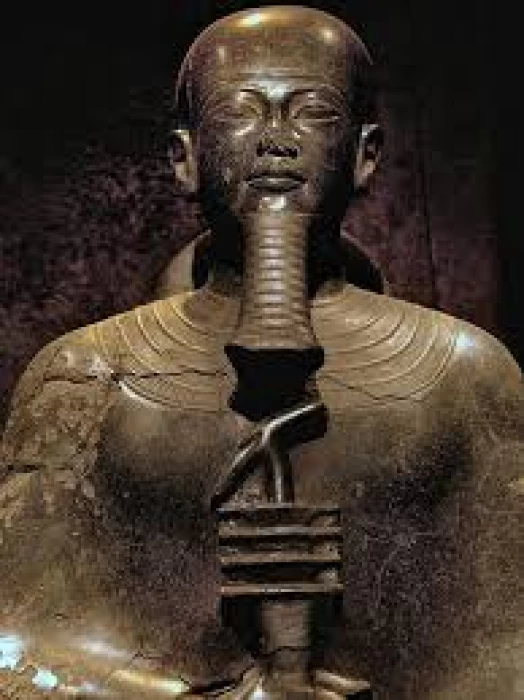
创造和工匠之神普塔
神普塔
Ptah是他在孟菲斯圣殿的大祭司,也是手工艺之神。 他与他的妻子Sekhmet(最古老,最强大的神灵之一)是孟菲斯的三合会之一。 代表为母狮,太阳神Amun Ra的女儿,被称为太阳和战争女神)和奈费尔图姆(他代表日出,据说他用眼泪创造了人类)。
Ptah还举行了一个名为(开口)的重要仪式,这是一种丧葬仪式,以确保死者在来世能够吃喝。
创造与工匠之神
在旧王国中,他已经与孟菲斯墓地的神索卡尔(Sokar)相认:Ptah和Sokar因此将活人之城与死者之城统一起来。 进一步的识别,从奥西里斯移动为死者之神,导致Ptah-Sokar-Osiris的形成,作为孟菲斯的超越神性,到现在为止。 从新的王国开始,他重新获得了他的个性,他是女神Sekhmet的丈夫和Nefertum神的父亲。
Ptah was the high priest of his temple at Memphis and also the god of Crafts. He was one of the Triad of Memphis with his wife Sekhmet (one of the oldest and most powerful deities. represented as a lioness, the daughter of the sun god Amun Ra, and is known as the goddess of sun and war)and Nefertum (he represents the sunrise, and it is said that he created mankind from his tears).
Ptah also held an important ritual called (Opening of the Mouth), a funerary ritual to ensure that the deceased person would be able to eat and drink in the afterlife.
In the Old Kingdom, he was already identified with Sokar, the god of the necropolis of Memphis: Ptah and Sokar thus unified the city of the living with the city of the dead. A further identification, which moves from Osiris as the god of the dead, leads to the formation of Ptah-Sokar-Osiris, as a transcendent divinity in Memphis and, by now. Starting from the New Kingdom he regains his individuality, he is the husband of the goddess Sekhmet and the father of the god Nefertum.
Path
- Lord of Ankh Tawy 'The Life of the Two Lands' refers to the unification of Upper and Lower Egypt.
- Nefer Her "Ptah with a beautiful face" refers to the belief that his flesh was made of gold.
- Ptah-Sokar-Osiris : At the end of the period (737–332 BC), the combined traits of the gods gained popularity, and this composite deity assisted the deceased in his trip to the afterlife. A carved wooden statue of the composite god was among the funeral items placed inside the tomb containing the deceased.
- Ptah-Sokar-Atoum's affiliation with the deity of the dead, Sokar, and the creator god of Heliopolis, Atoum, shares many characteristics with Osiris.
Ptah is depicted as a man with green skin, sheathed in a very tight-fitting shroud and capped with a simple blue cap; he holds vertically in both hands a composite scepter bringing together: the sceptre Ouas, the cross ânkh and the pillar Djed, the emblems of life, stability and omnipotence. Unlike the other gods, he wears the straight beard of the pharaohs. Around the neck it has a wide collar held in place by a counterweight on the back. Sometimes, it rests on a pedestal (base of the throne) which has the shape of a hieroglyph and whose meaning is also a symbol for Maât ("world order").
Present the architectural wonders dedicated to Ptah:
The great temple of Ptah in Memphis: A complex that radiated power and divinity, becoming the beating heart of the worship of Ptah.
Other curiosities: The minor temples and altars scattered across Egypt reveal the extent of his adoration.
Beautiful decorations and artwork that honoured Ptah's strength and inventiveness were found inside the temples.














